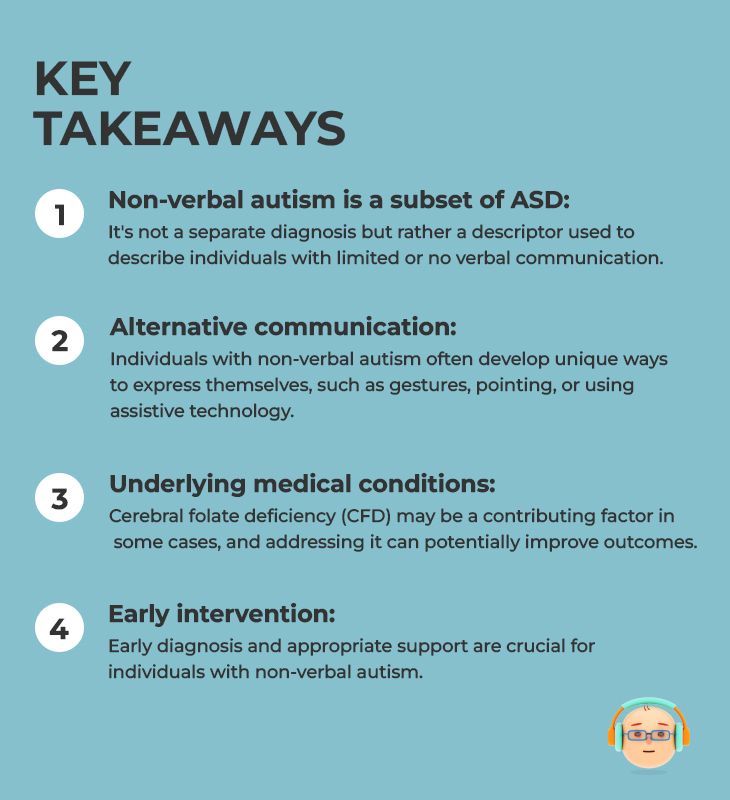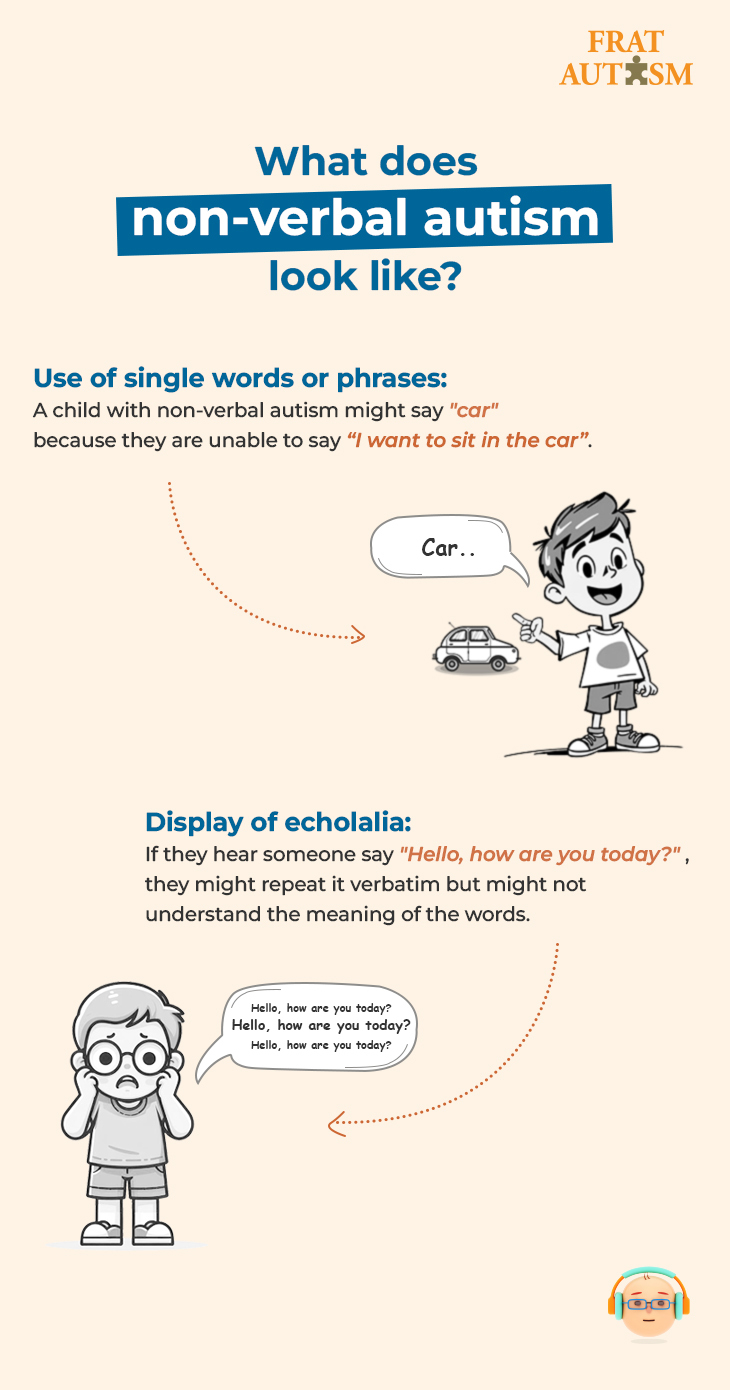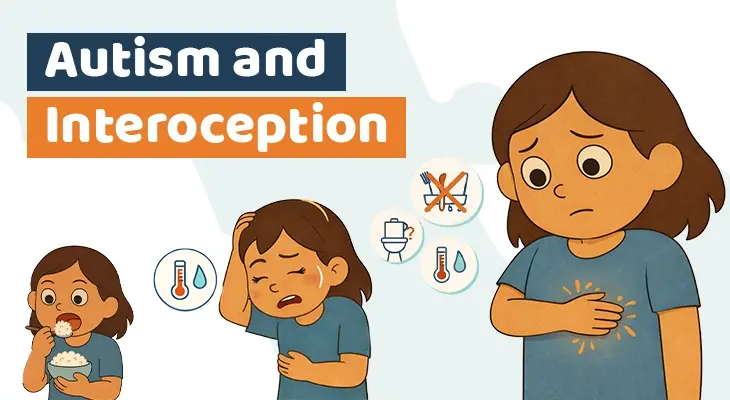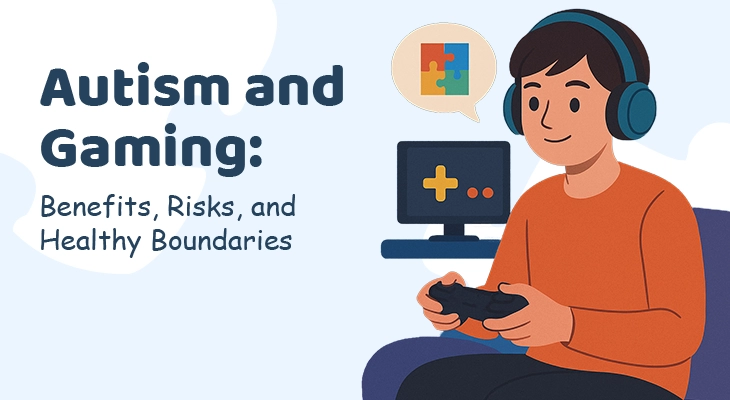
Download Download & share this Knowledge card in your network [Free Download]
Introduction
While autism is a formal diagnosis, non-verbal autism is not a separate diagnosis but rather a descriptor used to describe individuals with autism spectrum disorder (ASD) who have limited or no verbal communication. It’s a subset of ASD that characterizes a specific set of symptoms in individuals with autism spectrum disorder, who may have difficulty using spoken language to express their thoughts, feelings, or needs. An estimated 25% to 35% of autistic children are considered nonverbal. [1]
However, this doesn’t mean they can’t communicate or understand language. Many individuals with non-verbal autism use alternative forms of communication, such as sign language, picture exchange communication systems (PECS), or speech-generating devices (SGDs). For this reason, non-verbal autism is also known as non-speaking autism.
In this blog, we will explore the unique challenges and strengths of individuals with non-verbal autism.
Table of Contents
- Introduction
- What Does Non-Verbal Autism Look Like?
- How Do Non-Verbal Autistic Kids Communicate?
- How Is Non-Verbal Autism Diagnosed?
- What Causes Non-Verbal Autism?
- Non-Verbal Autism and Autism Level 3: A Closer Look
- Understanding The Link Between Non-Verbal Autism And Cerebral Folate Deficiency
- Did You Know?
- Frequently Asked Questions (FAQs) On Non-Verbal Autism
- Conclusion
- References
What Does Non-Verbal Autism Look Like?
Understanding the nuances of non-verbal autism can be challenging because the line between verbal and non-verbal autism is blurred. While kids with non-verbal autism may have limited or no verbal communication, they often possess unique ways of expressing themselves.
One common example is the use of single words or phrases. For example, a child with non-verbal autism might say “car” when they see a car, but they may struggle to use the word in a sentence or to express a specific need related to cars. The child might use the word ‘car’ in various ways, often beyond its literal meaning. For instance, they might say “car” when they see a car, but they may also use it to express their desire to play with a car toy. Instead of saying “I want to sit in the car”, they might simply say “car” while pointing to a car seat or making gestures indicating their intention.
A child with non-verbal autism might use echolalia, which is the repetition of words or phrases they’ve heard. For example, if they hear someone say “Hello, how are you today?”, they might repeat it verbatim.
However, it’s important to note that this doesn’t necessarily mean they understand the meaning of the words. They might be repeating them simply because they find them interesting or because they’ve learned that it’s a socially acceptable response. If you notice your child with autism exhibiting signs of echolalia, consider reading our blog Echolalia in Autism: Causes, Types, Reasons, Treatment and Support

Download Download & share this infograph card in your network [Free Download]
How Do Non-Verbal Autistic Kids Communicate?
Autistic kids identified as non-verbal often develop unique and creative ways to communicate their thoughts, feelings, and needs. Here are some common alternative communication methods often used by non-verbal autistic kids:
-
Gestures and Pointing
Children with non-verbal autism may use gestures or pointing to indicate their needs or desires. For example, they might point to a toy they want or point to their mouth when they’re hungry.
-
Vocalizations
Non-verbal children may use sounds or vocalizations to express their emotions or communicate their wants and needs.
-
Visual Aids
Visual aids, such as picture schedules or communication boards, can help individuals with non-verbal autism express themselves and understand their environment.
-
Assistive Technology
Devices like speech-generating devices (SGDs) or iPads with communication apps can provide alternative means of communication.
How Is Non-Verbal Autism Diagnosed?
Diagnosing non-verbal autism involves a comprehensive evaluation by a qualified healthcare professional. There is no single test that can definitively diagnose autism, but a combination of assessments and observations is typically used.
Key steps in the diagnostic process:
- Parental concerns: Parents often notice early signs of autism, such as delayed speech or language development, lack of eye contact, or repetitive behaviors.
- Developmental screenings: Pediatricians may conduct developmental screenings to identify potential developmental delays or concerns.
- Comprehensive evaluation: A multidisciplinary team, including a developmental pediatrician, psychologist, speech-language pathologist, and occupational therapist, may conduct a thorough evaluation to assess various areas of development.
- Diagnostic tools: Standardized assessment tools, such as the Autism Diagnostic Observation Schedule (ADOS) or the Autism Diagnostic Interview-Revised (ADI-R), can be used to help diagnose autism.
What Causes Non-Verbal Autism?
While the exact causes of non-verbal autism remain unclear, recent research has focused on the role of auditory processing in non-verbal autism. Studies suggest that individuals with non-verbal autism may have differences in how their brains process auditory information, which can contribute to language delays.
A 2019 study found that nonverbal and minimally verbal autistic individuals may have delayed responses to auditory tones compared to verbal autistic and typically developing children.[2] This suggests that differences in how the brain processes auditory information may play a role in language development.
While the causes of non-verbal autism are complex and multifaceted, ongoing research continues to shed light on the underlying factors. More research is needed to fully understand the causes of non-verbal autism, however, these findings provide valuable insights into the complex factors that may influence communication development in individuals with ASD.
Non-Verbal Autism and Autism Level 3: A Closer Look
Non-verbal autism is often associated with Autism Level 3, the most severe level of the disorder. Individuals with Autism Level 3 require substantial support in daily living and exhibit significant challenges in communication, social interaction, and behavior.
While not all individuals with non-verbal autism will fall into Autism Level 3, it’s important to recognize that many individuals with limited or no verbal communication may require significant support.
Since you are reading this blog, you may also be interested in:
Understanding The Link Between Non-Verbal Autism And Cerebral Folate Deficiency
While non-verbal autism is primarily characterized by communication challenges, it’s important to consider the potential impact of underlying medical conditions. Research suggests a connection between cerebral folate deficiency (CFD) and autism, particularly in individuals with severe symptoms or limited verbal abilities.
Cerebral Folate Deficiency (CFD)
- Definition: CFD occurs when there is insufficient folate, a B vitamin essential for brain development, in the cerebrospinal fluid.
- Link to autism: Studies have indicated a higher prevalence of CFD in individuals with autism, especially those with severe symptoms or limited verbal communication.
- Impact on development: CFD can affect various aspects of development, including cognition, behavior, and communication.
The Role of the FRAT® Test
- Diagnosis of CFD: The FRAT® test is a valuable tool for diagnosing folate receptor autoantibodies (FRAs) often found in CFD, which ultimately interfere with folate absorption in the brain.
- Early intervention: Early diagnosis of CFD is crucial for timely treatment and potential improvements in outcomes.
Potential Benefits of Addressing CFD
- Improved communication: Addressing CFD may lead to improvements in verbal communication skills and overall language development.
- Enhanced cognitive function: Addressing folate deficiency can support cognitive development and improve overall brain function.
Frequently Asked Questions (FAQs) On Non-Verbal Autism
Yes, it is possible for individuals with non-verbal autism to develop verbal communication skills later in life. Early intervention and specialized therapies can support language development. However, it’s important to remember that not all individuals with non-verbal autism will become verbal.
No, non-verbal autism is not simply a speech delay. While speech delay can be a symptom of autism, it’s not the sole defining characteristic of non-verbal autism. It’s a complex condition that involves more than just speech difficulties.
Use visual supports, such as picture schedules or communication boards, to help your child express their wants and needs. Encourage the use of gestures, pointing, or other alternative forms of communication.
Individuals with non-verbal autism may face challenges in social interaction, emotional regulation, and sensory processing. They may also struggle with understanding and using language.
Speech therapy, occupational therapy, applied behavior analysis (ABA), and social skills training can be beneficial for individuals with non-verbal autism.
Conclusion
Non-verbal autism is a complex condition that presents unique challenges for individuals and their families. While communication may be limited, these individuals possess unique ways of expressing themselves and connecting with the world.
By understanding the nuances of non-verbal autism, parents, caregivers, and professionals can provide the necessary support and interventions to help individuals with non-verbal autism thrive. Through early diagnosis, appropriate therapies, and a supportive environment, individuals with non-verbal autism can develop valuable communication skills and lead fulfilling lives.
Remember, every individual with non-verbal autism is unique, and their journey is filled with potential. With the right support and resources, they can overcome challenges and achieve remarkable outcomes.







